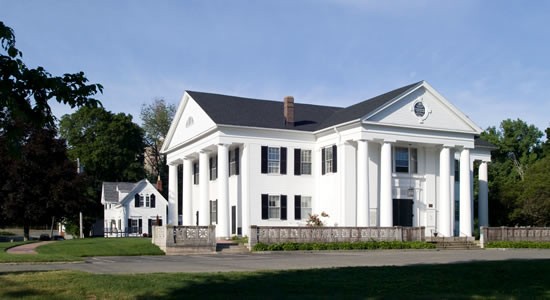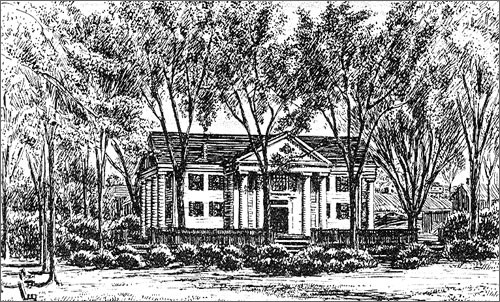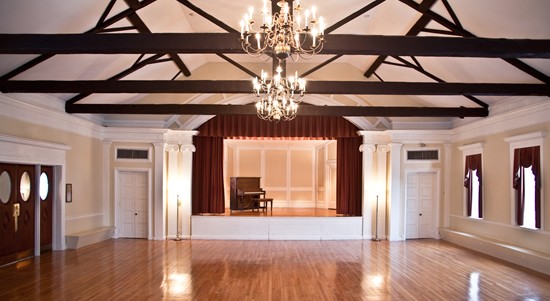Village Hall-Framingham History Center
Introduction
Text-to-speech Audio
Images
Village Hall (image from Framingham Historical Society)

Historic sketch of Village Hall (image from Framingham Historical Society)

Village Hall interior, ballroom (image from Framingham Historical Society)

Backstory and Context
Text-to-speech Audio
Village
Hall was designed by Dexter Hemenway and Solomon Willard (architect of the
Bunker Hill Monument) and built in 1834 by Dexter Etsy. It was Framingham's
second town hall, and included offices, school rooms, a meeting space, and the
town's first public library. The town outgrew the space by 1891, and it was
left in the hands of the Framingham Improvement Association after ten years'
vacancy. Local architect Charles M. Baker made significant alterations in the
early twentieth century, including the addition of a portico facing Centre
Common, a double staircase, and a Beaux Arts style terrace in 1913. A few years
later, the ballroom ceiling was removed to expose the oak beams and a stage was
added at one end. The building was damaged, but survived a fire in 1920 and was
donated by Charles Baker to the Framingham Historical Society in 1934. It is
listed on the National Register of Historic Places [1]. The Framingham History Center owns two additional historic buildings near the Centre Common: the Edgell Memorial Library and the Old Academy.
Cite This Entry
Marian, Sara and Clio Admin. "Village Hall-Framingham History Center." Clio: Your Guide to History. June 17, 2016. Accessed August 11, 2025. https://theclio.com/entry/23674

